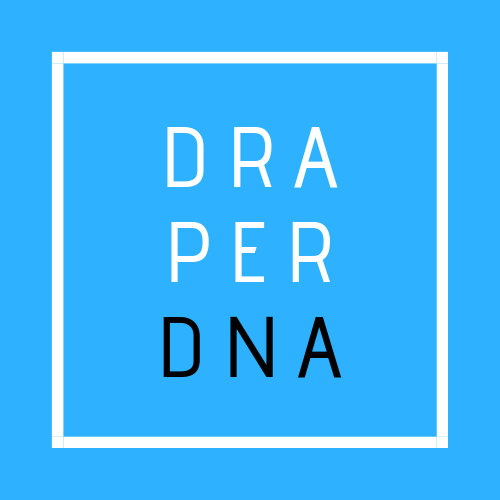There is a Difference with Dean Horowitz
June 1, 2021
What does Kanye West have to do with commercial architecture? Industry expert and long-time friend of Draper DNA, Dean Horowitz, president of commARCH shares with us how architecture and design is evolving and what we can anticipate for the future of both spaces. He also elaborates on how hip-hop has made a difference for the publication. Pretty cool.
Dean: I’m Dean Horowitz and I am President and Chief Product Officer for commARCH. While the title’s been around for 20 years, we purchased it about two years ago and relaunched it for early to mid-career architects, owners and developers. We have pre-publication, digital events, video, and more. We’re obsessed with how we provide the content our audience wants on the platforms they want to consume it.
What does architecture look like, post pandemic?
Dean: Honestly, we’re trying to figure that out right now. There are a lot of studies going on in universities around the country. A lot of firms are doing their own work. They want to see what the long-term impact is. A few months ago, the talk was, “This is going to change everything; how space is and how it’s arranged, and how we interact.” And then the pandemic started.
We’re now, maybe, getting to the point where businesses are re-opening and people are going back to work. It feels like people are thinking, “Who cares? I just want to go back to the way it was. Forget everything that we learned.”
What I find especially interesting is the social interaction. With architecture, designing a restaurant is different now. One of the most important areas of that restaurant is going to be the bathroom, because there’s a lot of icky stuff that we’re more sensitive to know that we would not put up with if it were still like the old way.
What we’ve been considering at commARCH is, how do you incorporate hospitality into the office? If you’re mandating people coming into Manhattan, for example, two or three days a week, and they decide to move to Montana, why are you paying for a hotel? Why not have incorporated a space and then really build your culture off of it?
Another thing that is really interesting with architecture is what happens with the home? I realize that’s more residential and we’re really focused on the commercial space, but how do you experience corporations and brands so that you actually have loyalty? When we’re interacting, we’re representing our company in the way the company wants to be represented. I think we’re going to see a lot of interesting things happen like that with interiors and maybe even corporations in a box. A lot of talk about what’s outdoor and indoor.
Now we’re going to want that outdoor/indoor space where we feel like there’s a really good air flow. I think it’s going to be important going forward and we’re definitely seeing that with architecture. Same for education and healthcare. We just had the phenomenon of doctors seeing patients on Zoom calls so you don’t have to go see them into an office. I don’t think anybody’s going to give up on that. So now what? How do you design a medical facility that allows the virtual as well as the in-person and the same with education, how do you have both?
As working from home has become the new normal, how are architects and designers suggesting setting up a successful working environment outside of the office?
Dean: Let’s talk first about architects and designers, because they’re so used to looking over and getting advice, asking questions and collaborating with one another, freely. There’s been an interesting struggle on their side of, how do you make virtual work? Eventually, I think everyone’s going to come back. Many professionals are looking at half spaces now or moving because, if they’re not going into an office all the time, why would they spend more money than they need to? It’s fascinating. And there are so many proposals right now on how work is going to look going forward. Honestly, it seems like people just want to go back to the way it was before with some added flexibility.
How have architects described maintaining businesses during this global pandemic?
Dean: That’s a really big question because with employees now working from home, you have less control, less culture and less collaboration. How do you handle clients? A lot of projects have been stalled. A lot of funding that was supposed to come through hasn’t gone through because of freezes on the money side. With that, how is your relationship with clients and how do you gain new business? It’s really complicated. Last year, at commARCH, there was this burst of interest in entrepreneurship with people wanting to do their own thing. They were working from home and comfortable with it. We saw all these people not leaving us, but moving companies.
As for clients, how they’re interacting has become more stilted and harder because when you think about it, you used to be able to call somebody on the phone and, these days, everybody just wants to get off the phone the minute they pick up. Where on a Zoom call, there’s only so much you can really accomplish. In-person is how so many of these relationships are formed. And that interaction is so important. The architect has to understand the owner and developers wishes and vision, and that is not necessarily happening right now.
What are some things you’ve learned in leading a media company during a pandemic?
Dean: From a traditional media side, there has been a lot of fear and a lot of worry. If people are working from home and you’re sending physical content to them — to their office — what does that mean for digital media? For us, we were set up right from the beginning, which is fortunate, and we were always using multiple platforms. We’re all about communicating in any way, anytime that consumers want that communication to occur. It made us feel stronger about the decisions we made in our investments. We are obsessed with being a media company without any baggage. We’re structured where people work for the company all around the world.
Secondly, I don’t want to hire anyone solely because they live near the office. They may have 75% of the skills and maybe we could train them and be optimistic because they’re the best person that we met. We don’t want that, we want the best people. I don’t care where you live, I don’t care what time you have, if you have five hours a week and you’re really good at it, we’ll contract you. The fear I have is that with the pandemic, other companies are going to pick up on what we’re doing, and this has been such an advantage for us.
We want to just constantly grow. Everyone on the team wants to constantly grow and just be there for what’s meaningful at this moment and to be relevant.
All the issues of CommARCH are relative to hip-hop, do you find inspiration in hip hop for each issue?
Dean: Yes, absolutely. We decided we would take that approach with our commitment to being relevant. Hip hop, when it’s done really well, is in the moment. It’s really talking about a dynamic that we’re all feeling, and it’s so lyrical and so to the heart of the matter, when done right. That’s how we want to be. Our covers are inspired by what we’re listening to at that point in time. The importance of it flows through the design of the title, just the musicality of it. We like to pick up quotes from different songs and things like that to put in.
At first, we thought people would think we were nuts. And then we heard from people, “Hey, you know what? I was just listening to that song!” We created a cover from a Run the Jewels song, and people really responded. And then it becomes a conversation starter.
It’s also been a statement to the demographic that we’re focused on and aligned with, because they’re focused on community. That’s a big thing with our readership, they want to positively impact the community as well as all the things they want for themselves, their families and their careers. That’s so much tied into hip-hop music. So yes, we find a lot of inspiration in it, but we want to tune into hip-hop and always be that frequency. And that gives us an interesting edge.
Thank you, Dean.
Watch the full interview on our YouTube channel at Draper DNA.
This “There is a Difference” interview was a lot of fun. We’d love to know what inspires you. Interested in being a part of this series? Please feel free to reach out to Abby at abby@draperdna.com.





